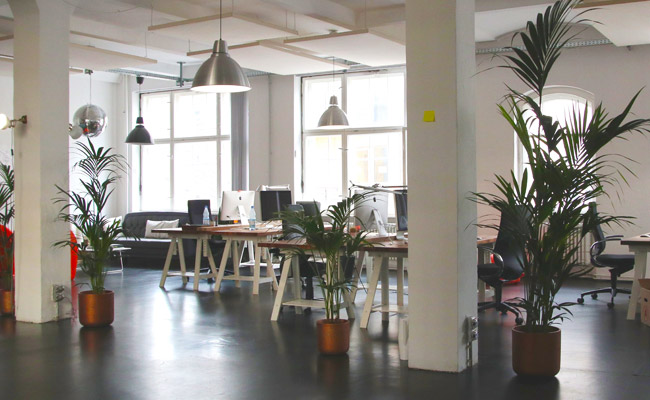
Biophilic, what exactly does that mean? It is based on the ‘biophilia hypothesis’. The biophilia hypothesis suggests that humans possess an innate tendency to seek connections with nature and other forms of life. Research shows that nature is good for people and for their productivity.
We all know the dull gray work environments filled with dozens of small cubes of 1m2 pressed together. These kind of cubes often reminds us of dystopian science fiction, as seen in the first minutes of The Matrix movie or dark comedies like The Office and Office Space. We all agree that such a working environment is not particularly motivational and certainly does not contribute to a pleasant working atmosphere.
These cubes became popular in a time where people believed 'the more impersonal the workspace the more productive the employee'. It was felt that personalization, humanity and even natural elements distract us unnecessarily from our work. Because if you wanted your employees to work hard, they had to be able to fully focus on their tasks.

But the opposite appears to be true. Biophilic design brings nature to our senses. William Browning, Catherine Ryan and Joseph Clancy have investigated why and how this green transformation works. They write: "Biophilic design can reduce stress, improve cognitive function, creativity and well-being and accelerate healing; As the world population continues to urbanize, these qualities become increasingly important". What they are actually saying is that we must be able to see and experience nature in all its diversity.
"Trees, flowering plants, animals and quiet water features, when we see them it works soothing and healing". If our environment can also stimulate our other senses, this feeling of relaxation is even deeper. The researchers also emphasize that everything from texture to smell can be used to create a kind of nature experience at work.
Source: www.richardvanhooijdonk.com